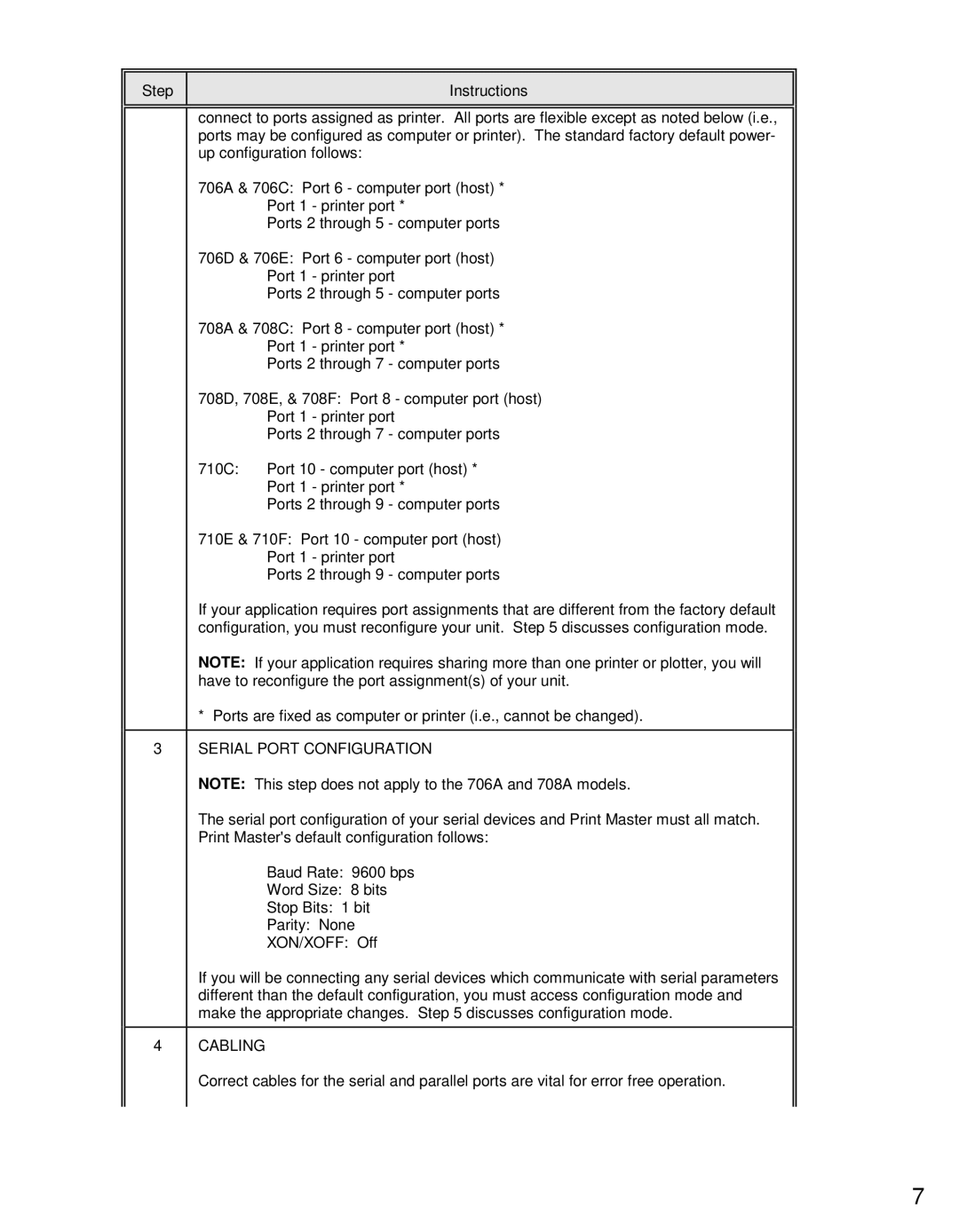
Step | Instructions |
|
|
connect to ports assigned as printer. All ports are flexible except as noted below (i.e., ports may be configured as computer or printer). The standard factory default power- up configuration follows:
706A & 706C: Port 6 - computer port (host) * Port 1 - printer port *
Ports 2 through 5 - computer ports
706D & 706E: Port 6 - computer port (host) Port 1 - printer port
Ports 2 through 5 - computer ports
708A & 708C: Port 8 - computer port (host) * Port 1 - printer port *
Ports 2 through 7 - computer ports
708D, 708E, & 708F: Port 8 - computer port (host) Port 1 - printer port
Ports 2 through 7 - computer ports
710C: Port 10 - computer port (host) * Port 1 - printer port *
Ports 2 through 9 - computer ports
710E & 710F: Port 10 - computer port (host) Port 1 - printer port
Ports 2 through 9 - computer ports
If your application requires port assignments that are different from the factory default configuration, you must reconfigure your unit. Step 5 discusses configuration mode.
NOTE: If your application requires sharing more than one printer or plotter, you will have to reconfigure the port assignment(s) of your unit.
*Ports are fixed as computer or printer (i.e., cannot be changed).
3 SERIAL PORT CONFIGURATION
NOTE: This step does not apply to the 706A and 708A models.
The serial port configuration of your serial devices and Print Master must all match. Print Master's default configuration follows:
Baud Rate: 9600 bps
Word Size: 8 bits
Stop Bits: 1 bit
Parity: None
XON/XOFF: Off
If you will be connecting any serial devices which communicate with serial parameters different than the default configuration, you must access configuration mode and make the appropriate changes. Step 5 discusses configuration mode.
4CABLING
Correct cables for the serial and parallel ports are vital for error free operation.
7
